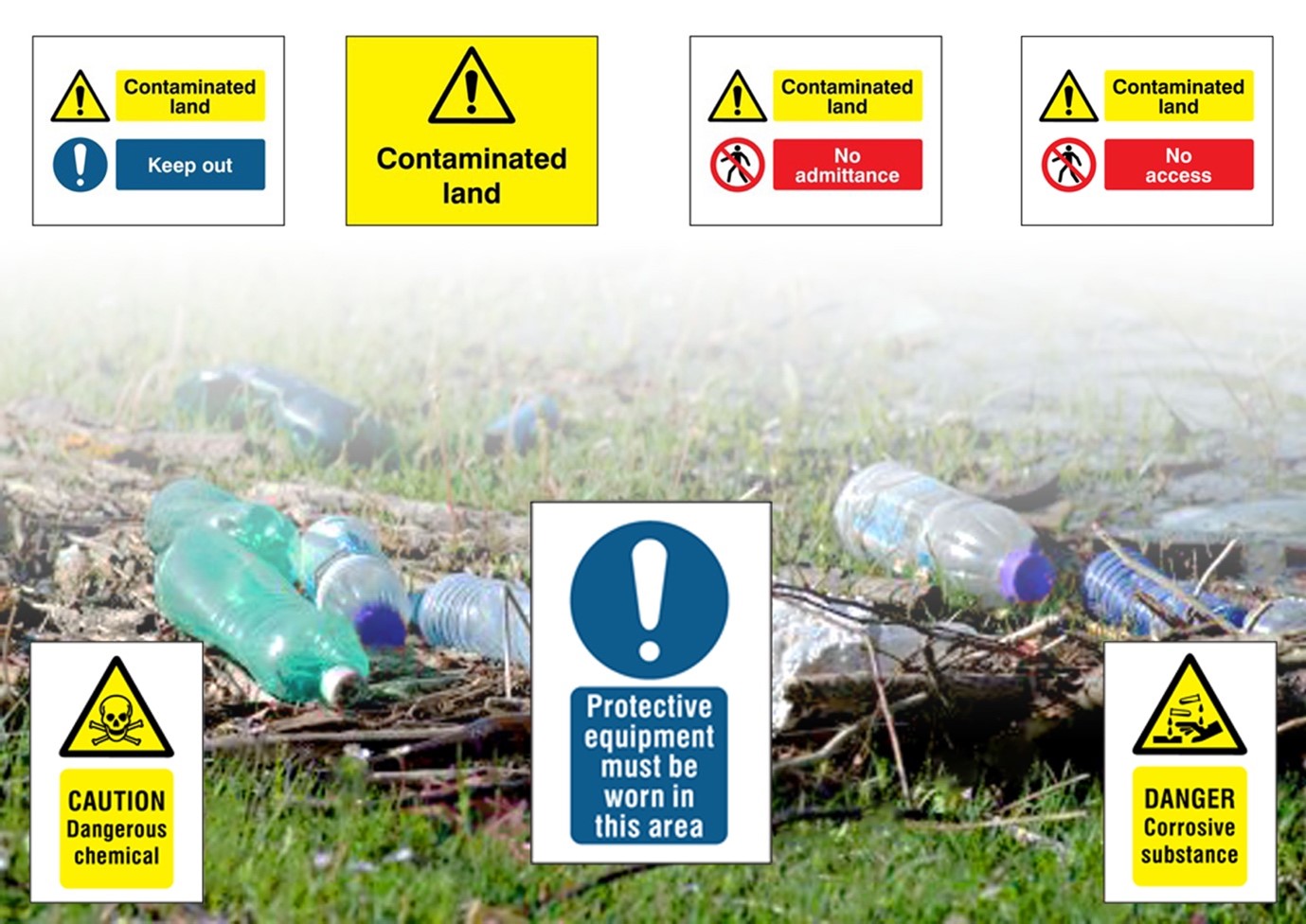
Contaminated land can pose a variety of risks, from exposing people to pollutants to environmental damage through run-off and groundwater drainage. However, it is not always easy to identify polluted land.
Who is responsible for contaminated land and how can you signpost the dangers effectively? Contaminated land signs are essential when it comes to identifying the hazards associated with polluted land when used correctly.
Below, we discuss how to deal with contaminated land and why you need contaminated land signs to reduce risk.
What Is Contaminated Land?
Land is defined as being ‘contaminated’ when substances present can cause one or more of the following:
- Significant harm to people, property or protected species of wildlife.
- Significant pollution of surface waters (for example lakes and rivers) or groundwater.
- Harm to people as a result of radioactivity.
There are many different hazards associated with contaminated land, from the danger of corrosive or toxic substances to biological and radioactive hazards. Pollution can be caused by several things, but the most common sources are:
- Heavy metals
- Oils and tars
- Chemical substances and preparations, like solvents
- Gases
- Asbestos
- Radioactive substances
Areas of extreme contamination are classed as ‘special sites’. These sites have an added level of risk, for instance by seriously affecting drinking water, by having radioactivity contamination or because they have been used for certain industrial activities like oil refining or making explosives.
If land is contaminated, it will feature on the Contaminated Land Register (UK). properly signposting the hazards it poses is vital to ensure the safety of workers and to deter unauthorised entry onto the land.
Who is Responsible for Contaminated Land?
Contaminated land law is in place to identify and help manage polluted sites. The law states that if land is legally considered ‘contaminated land’, then whoever caused the contamination is responsible for dealing with it.
There are a few exceptions to this, though: if the person can’t be identified, or the council decides they are exempt, then the council will usually pass responsibility for the land to the landowner or the person using the land.
Not all contaminated land is dealt with in the same way. For some sites, the decision may be to clean up the contamination. However, for others, the solution might instead be to fence the area off and make sure the dangers are easily identifiable. That is where contaminated land signs come in.
How to Use Contaminated Land Signs
Contaminated land signs have numerous uses and advantages, namely:
- Help to warn the workforce, contractors or the public about the dangers of contaminated land.
- Discourage unauthorised entry onto contaminated sites.
- Available with a variety of colours and messages, making them versatile.
- Made of durable, rigid plastic, and resistant to all types of weather.
Place contaminated land signs around the perimeter of a site as well as close to key hazards to ensure the dangers are easily identifiable. Doing so considerably lowers the risk around contaminated sites and will help protect your workers.
These signs can also help you help to meet requirements under the Environmental Protection Act, Contaminated Land Regulations (2006) England and the 2012 amendment, the Water Act 2003, Contaminated Land Scotland Regulations 2000 and 2005 amendment, and the Welsh Government Statutory Guidance on Contaminated Land.
Get High-Quality Contaminated Land Signs Today
Do you need signage for a contaminated site? If so, browse our range of strong and versatile contaminated land signs.
All our contaminated land signs are durable, weather-resistant, and feature recognisable warning symbols.